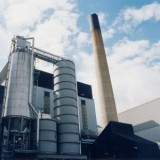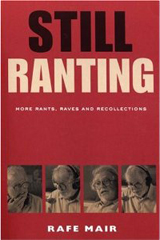When Santa Claus was delivering a few token Christmas gifts to a few houses in a few little villages in northern Europe, he seemed believable because his task was possible. But a globalized Santa, required to travel at searing speeds to distribute billions of gifts to billions of households, simply boggles belief. Despite the convenience of time zones, Santa’s task has become – sorry for the bad news – so big that he his no longer believable.
Bigness is a problem elsewhere, too. Global financing has become so big that the effects of a single monetary blunder can echo around the world. Corporations have become so big that their health is inseparable from the economic well-being of nations. And our human population is now so big that its needs are destabilizing the fundamental ecological structures regulating the planet’s biosphere. The times in which we live can now be characterized as the search for bigger and bigger solutions to bigger and bigger problems.
Could it be that we are being undone by bigness? This was the position taken by the Austrian-born economist, Leopold Kohr, in his 1957 book, The Breakdown of Nations (Guardian Weekly, Sept 30/11).
Kohr’s ideas were initially dismissed by monetary and financial experts as the vapid musings of a “poet”. But his ideas are now gaining credibility as the international financial community struggles to control a contagion that seems to be tipping the economic system from recession toward depression. Trillions of dollars in new liquidity – adding big money to a big problem – don’t seem to be helping. As many national economies integrate into a global system of regulation and trade, the problems they create seem to be less and less responsive to solutions.
Kohr’s thinking contradicts the present trend toward globalization. His argument is that bigness eventually overcomes “the human scale”, that “the problem is not the thing that is big, but the bigness itself.” Within a human scale, he contends, any system will work. But “whatever outgrows certain limits begins to suffer from the irrepressible problem of unmanageable proportions.” Perhaps we simply invent complexities that are too big for us to manage. Or perhaps the problem is in the inherent instability of bigness itself – if doubling size happens to quadruple complexity, then growth is inherently self-defeating. In the “crisis of bigness”, Kohr concludes, “instead of growth serving life, life must now serve growth, perverting the very purpose of existence.”
An assessment of our technological age seems to support this conclusion. Speed inspires more speed, consumerism nourishes more consumerism, population growth needs even more people to maintain demographic and economic balance. Mass travel homogenizes exotic places, and flying feels more like endurance than fun – as Yogi Berra said, in one of his famous oxymorons, “Nobody goes there any more, it’s too crowded.” Bigness also explains how a small electrical failure can darken half the seaboard of North America, how a single contaminated food product can threaten the safety of millions, and how a local disease can escalate to a pandemic. Kohr’s thinking would also explain why any expanding system must eventually collapse.
Bigness also explains how globalization undermines democratic processes. The bigger and more complex economic structures become as a result of international financial and trade agreements, the more are governments constrained and the less influence accrues to individual citizens – who respond to this futility by not voting.
Increasing sophistication in a highly technological society also requires increasing education – until such demands outstrip some people’s abilities to meet them. This suggests that unemployment and alienation may become an inherent part of any highly sophisticated society. People who don’t understand how things work and are unqualified to participate become disengaged, lost and bewildered amid the complexity and sophistication.
Bigness may also explain why large cities automatically break into human-scale “villages” where people have a sense of community and belonging. And bigness might also explain why people combat the depersonalization of excessive size by connecting to each other with digital devices, why they respond to industrial food production with gardening, and why they react to mass production by humanizing their possessions with artisan crafts. When big solutions can’t be found for big problems, then the task falls to the ingenuity of local communities – which is precisely what is happening.
Kohr’s “crisis of bigness” clearly relates to our current global environmental problems. Bigness has its own inexorable logic, a momentum that always justifies an escalating exploitation of nature with another mine or oil well, with more drilling, pipelines, tankers, industry, roads, consumption and growth. As Leopold Kohr discovered, questioning this theology of bigness is heretical.
But, in the great design of things, bigness is always balanced by smallness. As some things expand, others must contract. This is why our burgeoning population and our frenetic industrial activity are shrinking species diversity and narrowing ecological resilience – displacing nature’s complexity with our own. And all the heat generated by our quest for bigness is now melting Arctic ice. At present rates, the North Pole will be open ocean by the summer of 2050. And if Santa really lives there – as purported – then his house, his factory, his elves, his reindeer stables and his entire Christmas enterprise will sink into a warming sea. Not exactly a “Ho! Ho!, Ho!” event.





 Impress everybody with your literary taste. ISBN 978-1552854013.
Impress everybody with your literary taste. ISBN 978-1552854013.
 Make a fashion statement.
Make a fashion statement.